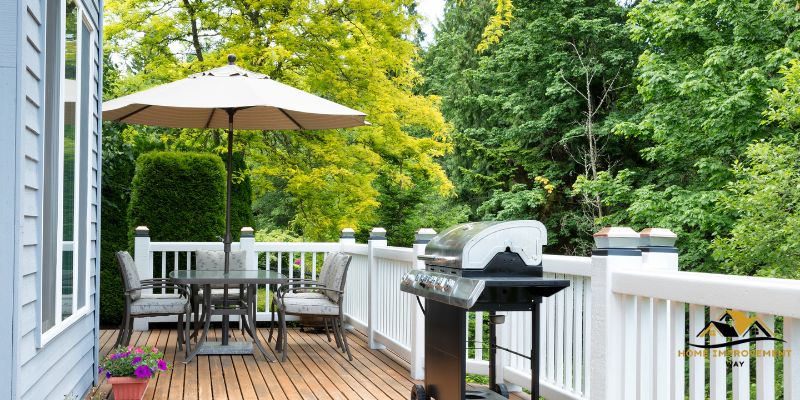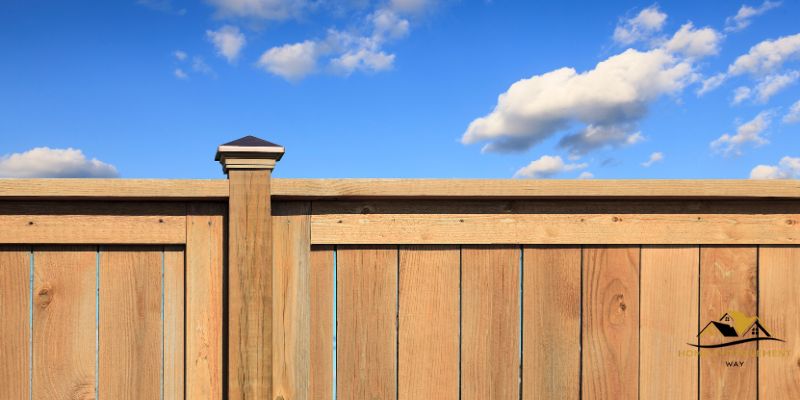Cedar is highly regarded for outdoor use due to its natural resistance to rot and decay. Its durability makes it a popular choice for outdoor furniture, decking, and siding.
Cedar wood is a remarkably resilient material revered for its longevity and aesthetic appeal when used in outdoor environments. It possesses inherent preservatives that fend off insects and withstand adverse weather conditions, ensuring a long-lasting and maintenance-friendly option for exterior applications.
Craftsmen and homeowners alike treasure cedar for its unique aroma and rich, warm tones that gracefully age into a distinguished silvery-gray patina. With a sustainability bonus, cedar grows quickly and is often harvested from well-managed forests, making it an environmentally conscious selection. Embracing the outside elements with grace and strength, cedar wood emerges as a superior candidate for outdoor projects, merging functionality with natural beauty.
Understanding Cedar Wood
When it comes to selecting materials for outdoor projects, cedar wood often emerges as a top choice among homeowners and builders alike. Cedar boasts a combination of durability, aesthetics, and versatility that makes it exceptionally well-suited for outdoor use. Whether you’re planning to construct a new deck, garden beds, or outdoor furniture, understanding the innate qualities of cedar wood can help you make an informed decision.
Characteristics Of Cedar
- Lightweight: Cedar is inherently light, which makes it easy to work with during the construction process.
- Dimensional stability: Unlike many other woods, cedar does not significantly change shape due to moisture, which means it maintains its form once installed.
- Aesthetic appeal: With its distinct warm tones ranging from mellow ambers to rich sienna reds, cedar adds a natural elegance to outdoor spaces.
- Aromatic scent: The wood’s pleasant fragrance is not only delightful but also helps repel insects naturally.
- Sound insulation: Cedar’s dense cellular structure makes it an excellent sound barrier, providing a serene outdoor retreat.
- Thermal insulation: Its natural insulation properties help maintain comfortable temperatures in structures built with cedar.
Natural Resistance To Decay
Benefits Of Cedar For Outdoor Projects
Cedar stands out for its natural durability and resistance to rot, making it an ideal choice for outdoor environments. Its inherent oils repel insects and decay, ensuring longevity and aesthetic appeal for garden decks, fences, and patio furniture.

Durability And Longevity
- Resistant to Rot: Cedar naturally resists decay, which means it’s less likely to rot when compared to other woods.
- Dimensional Stability: This wood doesn’t warp or change shape drastically, maintaining its structure through seasonal changes.
- Long lifespan: Properly maintained cedar can last for decades, making it a sound investment for outdoor structures.
Weather Resistance
| Weather Condition | Resistance Level |
|---|---|
| Moisture: | High – Cedar’s oils repel water, reducing the risk of moisture damage. |
| Sun Exposure: | Good – Natural compounds in cedar protect it from UV rays. |
| Temperature Fluctuations: | Excellent – Cedar withstands thermal expansion and contraction well. |
Insect And Pest Resistance
- Repels Insects: Its aromatic oils are natural insect repellents, deterring pests like termites and moths.
- Prevents Infestations: Cedar’s innate characteristics make it less inviting for critters to nest and breed.
- Kinder to the Environment: Thanks to these properties, cedar doesn’t require frequent chemical treatments, making it an eco-friendlier option.
Considerations For Outdoor Cedar Use
When delving into the realm of outdoor carpentry and design, choosing the right wood is paramount. Cedar stands out as an excellent option for outdoor applications due to its natural beauty, durability, and resistance to decay. Before opting for cedar in your next outdoor project, it’s important to understand the specific considerations that come with its use. Ensuring cedar retains its charming aesthetics and structural integrity means being aware of its maintenance needs and considering its environmental impact.
Maintenance And Upkeep
- Apply a water-repellent finish to protect against weathering and UV rays.
- Clean the wood surface periodically to remove dirt and organic materials that can foster decay.
- Inspect for signs of wear and treat promptly with a wood preservative if necessary.
Environmental Impact
Cedar wood is favored for its sustainability and environmentally friendly attributes. The key considerations for environmentally conscious consumers include:
| Sustainability Factor | Details |
|---|---|
| Source | Opt for cedar sourced from responsibly managed forests to ensure ecological balance. |
| Chemical Treatments | Avoid using harsh chemical treatments and select eco-friendly alternatives instead. |
| End-of-Life | Cedar is biodegradable, but consider repurposing or recycling to reduce environmental footprint. |
Ultimately, the biodegradability of cedar is a significant plus, enabling the wood to decompose naturally at the end of its lifespan. Still, reusing or recycling cedar products bolsters its environmental friendliness, as it prevents unnecessary waste and promotes a circular economy.

Best Practices For Utilizing Cedar Outdoors
Cedar wood boasts natural beauty and remarkable resilience, making it an excellent choice for outdoor applications. Its inherent oils act as preservatives, warding off rot, decay, and insect attacks. To maximize the longevity and appearance of cedar in outdoor settings, adhere to these essential best practices.
Proper Installation Techniques
Installing cedar correctly is pivotal in ensuring durability and preventing premature wear. Consider the following tips:
- Avoid ground contact: Elevate cedar components to prevent moisture absorption. Usage of spacers or posts can achieve this.
- Pre-drill holes: Cedar is less dense and can split easily. Pre-drilling holes for screws or nails helps maintain the wood’s integrity.
- Stainless steel fasteners: Opt for stainless steel or coated screws and nails to combat corrosion and wood staining.
- Allow for expansion: Include a slight gap between boards to accommodate wood expansion and contraction due to temperature changes.
Finishing And Sealing Options
Protective finishes and sealants enhance cedar’s longevity and aesthetics when exposed to the elements.
| Type | Benefits | Application Tips |
|---|---|---|
| Water-repellent Preservatives | Minimize warping and cracking | Apply before installation for thorough coverage |
| Stains | Offer color while showcasing grain patterns | Opt for high-quality stains with UV inhibitors |
| Clear Sealers | Preserve natural color; provide weather resistance | Reapply periodically for optimal protection |
| Paint | Create a solid, uniform appearance | Ensure cedar is clean and dry before painting |
Before applying any finish or sealant, clean the cedar surface thoroughly. Allow the wood to dry completely after cleaning for the best results.
Frequently Asked Questions For Is Cedar Good For Outdoor Use
Does Cedar Wood Withstand Outdoor Elements?
Cedar is highly resistant to decay, which makes it ideal for outdoor use. Its natural oils deter pests and it withstands weathering well, keeping its integrity over time without the need for frequent treatments.
What Is The Durability Of Cedar For Outdoor Furniture?
Cedar outdoor furniture is known for its longevity. It can last 15-20 years with proper care and maintenance, thanks largely to its inherent rot and insect resistance.
Is Cedar Wood Maintenance-heavy For Patios?
Cedar is relatively low-maintenance for outdoor patios. It requires occasional cleaning and may need a protective finish every few years to maintain its color and durability against the elements.
How Does Cedar Compare To Other Woods For Decks?
Cedar is more durable and resistant to rot and insects compared to many other woods. It offers a middle ground in terms of cost and maintenance, being less expensive than tropical hardwoods but more costly than pressure-treated pine.
Conclusion
Wrapping up, cedar stands out as an excellent choice for outdoor projects. Its natural resistance to decay and pests ensures durability, while the charming appearance elevates aesthetics. Consider cedar for your next outdoor undertaking to blend longevity with beauty.


